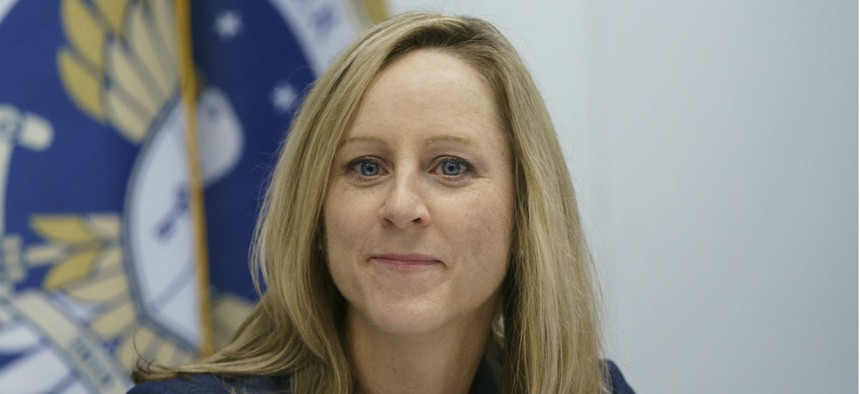
“I care much more about what we do than what we are called,” CFPB Director Kathy Kraninger told staff in an email. Carolyn Kaster/AP
Consumer Financial Protection Bureau Director Restores Agency’s Name
Kathy Kraninger reversed a decision by former acting director Mick Mulvaney to change CFPB’s name to BCFP, citing cites costs and other issues.
During her first week on the job, Consumer Financial Protection Bureau Director Kathy Kraninger on Dec. 17 reversed a decision by her White House mentor and cancelled the work underway to change the seven-year-old agency’s name to the statutorily correct Bureau of Consumer Financial Protection.
“I care much more about what we do than what we are called,” Kraninger said in a staff email the bureau provided to Government Executive. But this issue is an early priority because of implementation decisions that need to be made in real time. While I certainly understand why Acting Director [and White House Budget Director Mick] Mulvaney emphasized following the letter of the law, I also understand that there are a variety of issues to take into consideration,” she said.
Having sought input from staff, lawmakers and outside stakeholders, “I have officially halted all ongoing efforts to make changes to existing products and materials related to the name correction initiative,” Kraninger said. “For statutorily required reports, legal filings, and other items specific to the Office of the Director, we will use the Bureau seal and the statutory name we were given” in the 2010 Dodd-Frank Financial Reform Act, she added. But the name "Consumer Financial Protection Bureau” and the existing CFPB logo will continue to be used for all other materials.
“In other words, we have a legal name but will be using our colloquial name and the branded acronym CFPB, she said. “Many of us have legal names but use nicknames without much confusion. My birth certificate says Kathleen, but I also answer to Kathy. I believe this decision is most efficient and effective for our continued work together.”
The name change announced by Mulvaney in April became even more controversial after an internal study was leaked suggesting that it might cost industry $300 million to make the change. Mulvaney directed the change “to send a message” that the bureau had a new direction, and many financial industry firms had begun using the new name. But consumer groups concerned over confusion after years of branding the new agency were unhappy.
The bureau had defended Mulvaney’s change before her narrow confirmation this this month.







